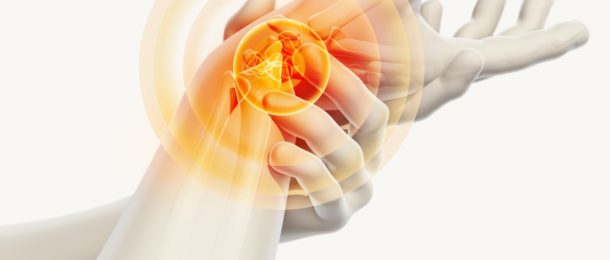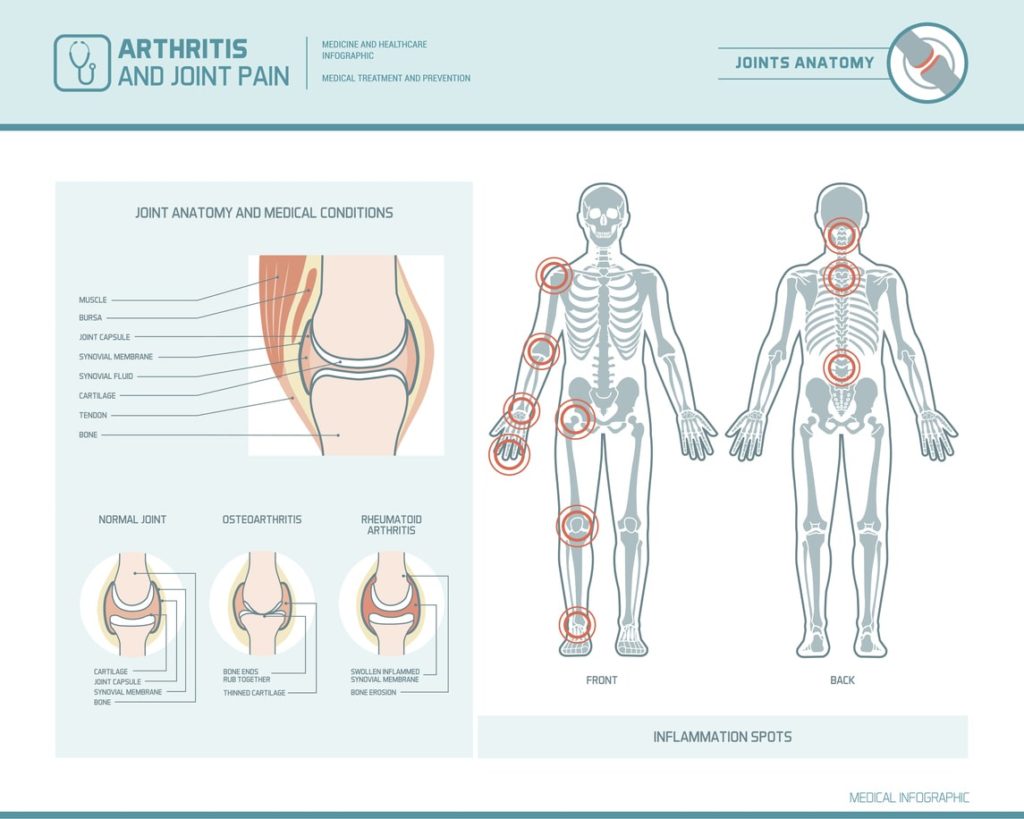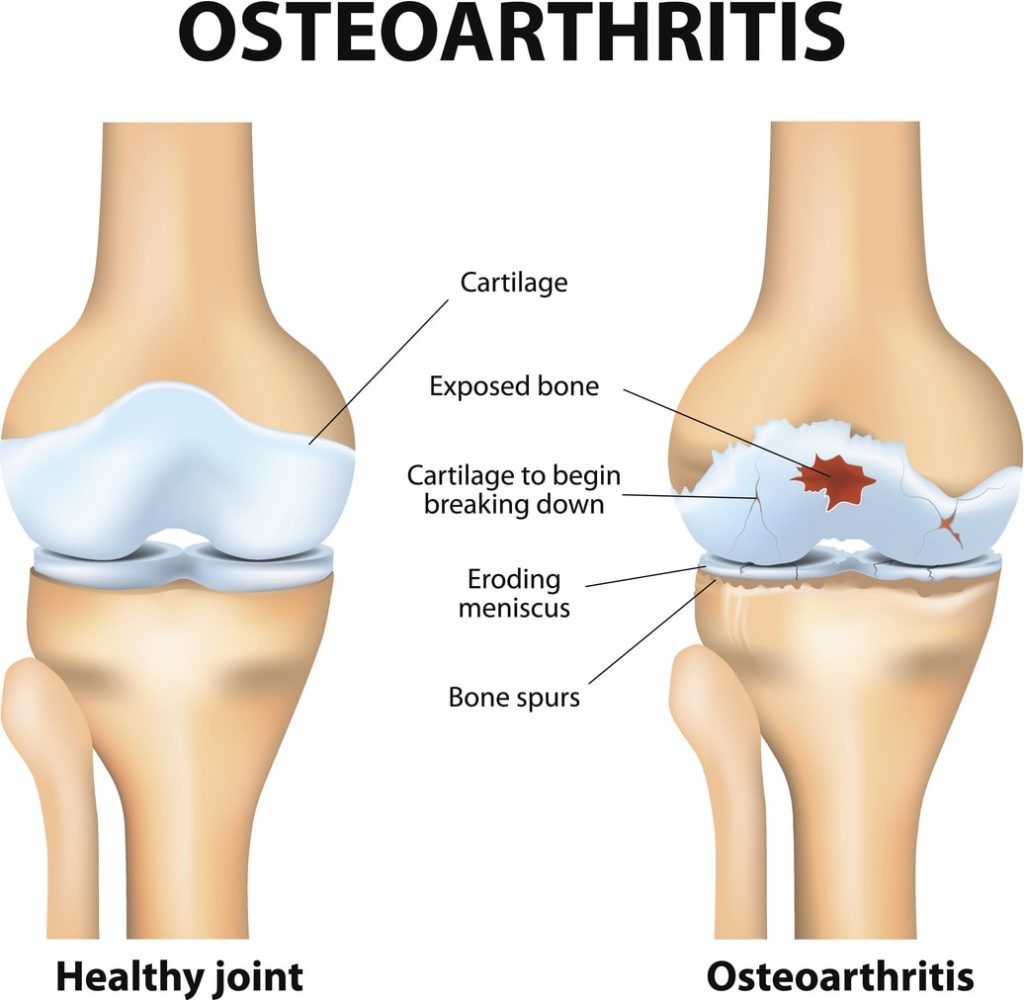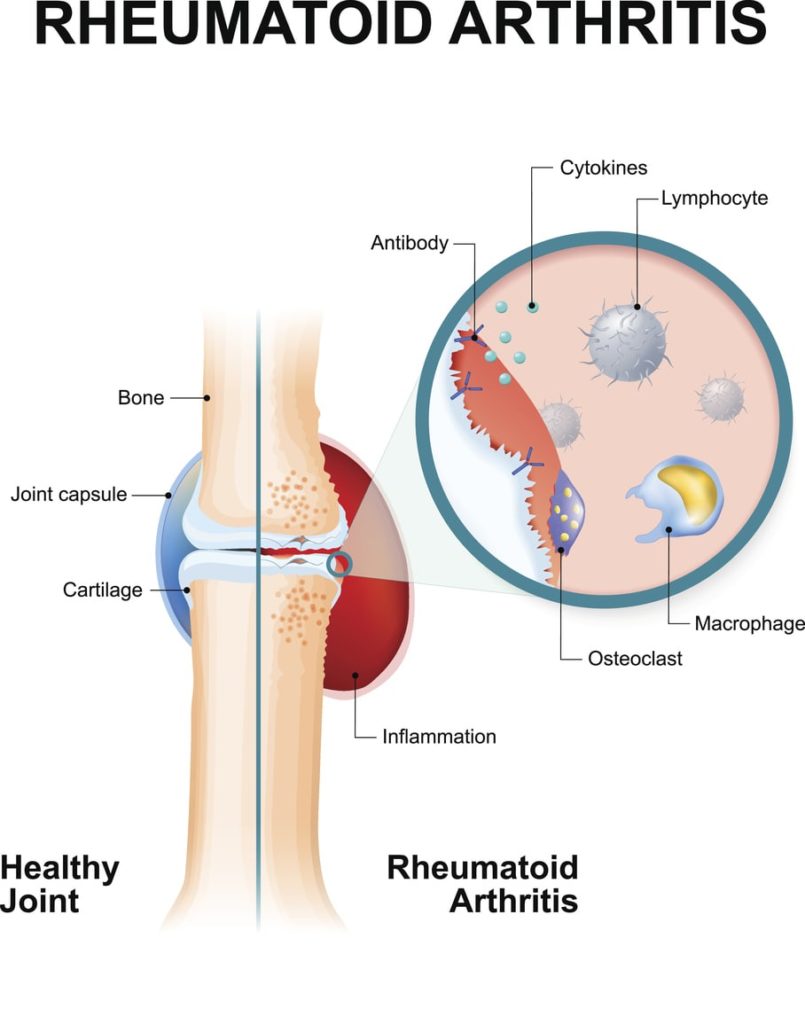Arthritis Awareness Month: Different Types of Arthritis to Know

May is Arthritis Awareness Month, and we are here to support over 50 million Americans struggling with different types of arthritis, with patients of all ages and backgrounds.
An inflammatory disease, arthritis is characterized by inflammation and pain in the joints. Common symptoms include joint stiffness, swelling, and feverishness.
Different types of arthritis can range from presenting mild pain to becoming a debilitating musculoskeletal disease, and while it mostly affects people aged 65 and older, it is also present in some form in children, teens, and young adults.
Why Participate in Arthritis Awareness Month?
As a pain management center, we focus heavily on arthritis, and how it affects the lives of our patients.
Arthritis is an extremely common, yet misunderstood disease. This Arthritis Awareness Month, we will show support to our clients, and everyone suffering from arthritis.
This Arthritis Awareness Month, our goal is improve knowledge of this disease by discussing the different types of arthritis.
Because of the many different types of arthritis, it can be difficult to receive the right treatment that works for you. Our goal is to help explore the different types of arthritis, their symptoms, and how to ease each type of pain.
To understand arthritis, it is important to understand its sources – and how it can manifest. More than just a symptom of old age, arthritis is something nearly 400 million people struggle with worldwide. It’s often a source of such pain that it can drastically affect the way people live and work.
In fact, a report by the CDC notes that a third of arthritis patients in the US report that the disease limits their livelihood and leisure.
What Are the Different Types of Arthritis?
While it is a widespread condition, arthritis is tough to understand. Misconceptions muddy the public understanding of what this disease is, and how it occurs.
By definition, arthritis is any condition involving the inflammation of the joints. In general, a breakdown of the body causes arthritis, either in the form of aged or overused joint tissue and cartilage, or through an immune reaction.
There are many different types of arthritis, and sources of arthritis vary and depend from condition to condition.
Below, we’ll explore the 4 different types of arthritis that are most common.
4 Common Types of Arthritis
Arthritis, despite the simple definition, comes in over a hundred different forms.
We will go over the different types of arthritis that are most common, and describe their origins, symptoms, and possible treatment options.
- Osteoarthritis
- Fibromyalgia
- Rheumatoid Arthritis
- Psoriatic Arthritis
We will go into detail about the different types of arthritis below.
1. Osteoarthritis
Known as the most common form of arthritis, osteoarthritis is centered in the joints and involves the deterioration of joint cartilage.
As we walk, run and jump, the protective ends of our bones wear down through constant impact. This affects our joints the most, as they receive and process the most force in any given movement. However, osteoarthritis can also affect the hips, and spine.
Due to the nature of wear and tear, it is most common in people 65 or older. However, genetics or lifestyle choices can speed up the rate at which a person’s cartilage wears down. This then accelerates the symptoms. These primarily include pain, swelling and tenderness around areas where the cartilage is wearing down.
Treatment of Osteoarthritis
Treatment involves the prevention of further deterioration, and the regeneration of cartilage, as well as pain management. While exercising might be counter-intuitively seen as a cause of cartilage wear down, strengthening the muscles and tendons around the bones can take a lot of stress off the joints, thus decreasing the rate at which your osteoarthritis progresses.
Exercise can also help you better manage pain, both through a release of endorphins and by strengthening the body.
Weight loss is also an option. Obesity increases the risk of arthritis by placing more pressure on the joints. Likewise, an unhealthy lifestyle options can lead to weaker bones and cartilage due to poor nutrition.
Adopting better eating and movement habits will reduce pain, slow the arthritis, and improve your quality of life. Be careful not to overdo it. Exercise as appropriate for your body’s current condition and strength. At times, simply walking more often can produce a positive change for your symptoms. Over time, you can move on to more strenuous exercise, as per your doctor’s recommendation.
2. Fibromyalgia
Classically, arthritis is a joint-related disease, but fibromyalgia is connected to arthritis through widespread pain not only in the joints, but throughout the musculoskeletal system.
Plagued by an incomplete understanding of the disease, the medical community still has trouble identifying concrete causes for fibromyalgia. While it is centered in the nervous system, it is known as a specific set of symptoms, rather than a single disease centered on a known source.
Fibromyalgia affects nearly 4 million Americans, most of them women. Its connection to arthritis is difficult to understand. However, people struggling with forms of arthritis – including rheumatoid arthritis and lupus – are at a greater risk of developing fibromyalgia as well.
Treatment of Fibromyalgia
Suspected causes or factors in the development of fibromyalgia include an extended exposure to physical and emotional pain, particularly trauma. Hormonal changes or an infectious illness also are a suspect of cause as well. Another possible link is poor gut health, from bacterial overgrowth to other problems sourced in a person’s gut flora.
Treatment for fibromyalgia largely involves pain management. Until a person’s individual cause for pain is identified, their treatment lessens the effects the disease has on their life.
3. Rheumatoid Arthritis
Much like osteoarthritis, rheumatoid arthritis affects most joints.
But rather than wear-and-tear, rheumatoid arthritis is defined by the inflammation of the lining around joints due to an autoimmune reaction.
Your immune system begins attacking your joints, skin, blood vessels, and even other organs like your heart and lungs.
Long-term rheumatoid arthritis, if left untreated, can be debilitating and can cause disability.
Treatment of Rheumatoid Arthritis
However, several treatments exist to combat the symptoms, and stop the disease from progressing.
Non-addictive painkillers, antirheumatic drugs, and medicine that specifically targets inflammation can help, and can help to combat RA.
4. Psoriatic Arthritis
Psoriasis is a chronic skin condition that essentially accelerates the rate at which your skin cells age, causing a fast buildup of dead and dying skin. It is commonly identified through red patches and itchy scales and is caused by an autoimmune reaction that erroneously forces your skin cells to grow much too quickly.
As part of psoriasis, you can develop joint pain, stiffness, and inflammation.
Treatment of Psoriatic Arthritis
Out of the different types of arthritis, this one is chronic, reoccurring with the condition itself. While a permanent cure does not exist, treatment focuses on forcing the condition into remission.
Other diseases tied to arthritis include gout and lupus, as well as a long list of more complex or specific disorders and conditions. Each one requires personalized treatment, involving medical, physical, and mental treatment options.
Tackling Pain
As a disease primarily centered around pain, pain management plays a critical role in fighting arthritis. While pharmaceutical tools exist to help combat acute pain, prescription painkillers are too much of a risk, for too little reward. Their potential for addiction and abuse is high, while their effectiveness fades with time, making them an impotent solution for chronic pain.
Instead, comprehensive pain management through a reputable clinic near you can offer a long-term solution for pain. Your specialist will help with physical therapy, opioid alternatives, talk therapy, mind-body techniques, alternative medicine and more.
Each case of arthritis is unique. Professionals must consider a person’s symptoms in relation to their lifestyles, circumstances, and possibilities to consider treatment options, and devise an effective plan for a better quality of life.
Understanding your own disease can go a long way towards combating it. However, by giving you a bigger picture of why you’re in pain, how your body is struggling, and what you have to do in order to follow your physician’s or specialist’s instructions and improve your symptoms.
As in any case, do not attempt any treatments yourself or begin applying exercise and drastic diet changes to yourself without first consulting a medical professional, and getting a full checkup. It’s important to know how your pain began and why you’re experiencing it before taking measures to treat it.
This Arthritis Awareness Month, take some time to learn the different types of arthritis; their symptoms and treatment options. Talk to your pain management specialist to create a personalized plan to reduce pain and lead you to a life of happiness.



